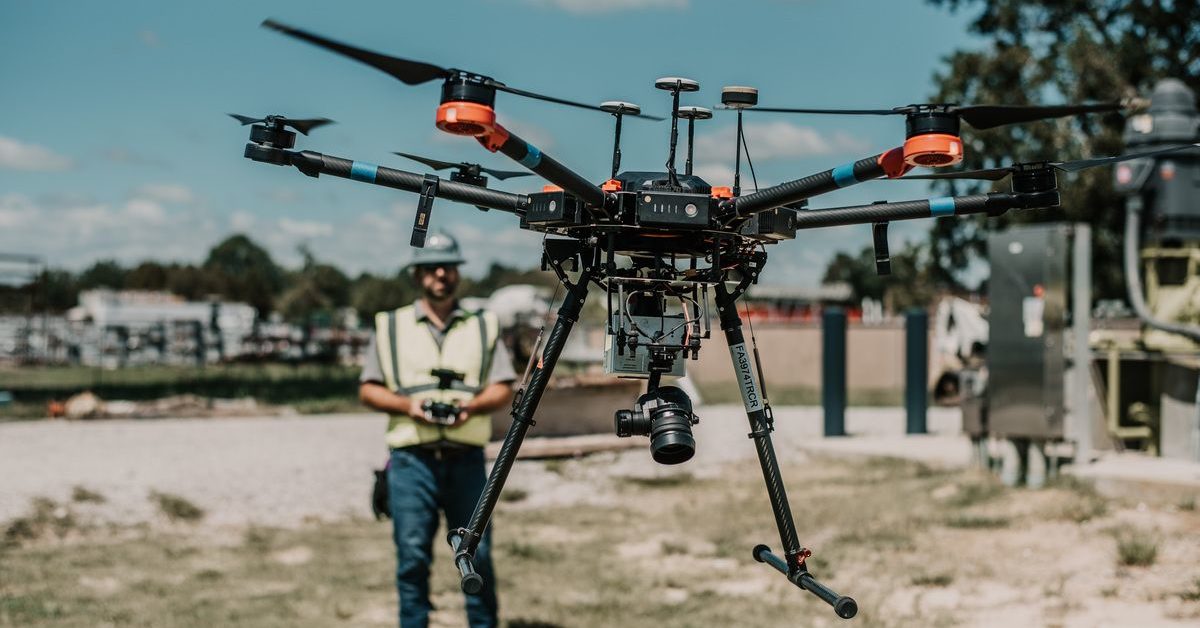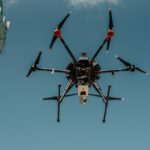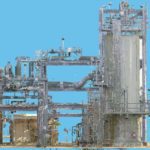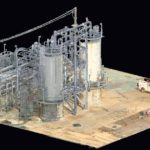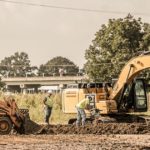Safety inspections are crucial in many fields. They are performed on everything from residential homes and construction sites to power lines and cell phone towers. Performing safety inspections manually often puts workers in harm’s way and data collection is limited.
Performing safety inspections using drones increases safety for both workers and the public. Drones are capable of gathering highly accurate data that inspectors can review from a safe remote location.
This article will discuss how drones are used for conducting health and safety inspections. It will examine how drones increase safety, what benefits they provide, and how they can be operated safely during inspections. Answers to some of the most commonly asked questions regarding drone inspections will be provided.
How to Use Drones for Health and Safety Inspections
Drones are incredibly versatile. Depending on the model used and the technology with which they are equipped, they are capable of performing almost any type of health and safety inspection. A remote pilot flies the unmanned drone. Data is collected then quickly processed and transmitted for inspectors to review.
Inspections can be watched live from any location if the drone captures live stream video. All data is stored and can be reviewed anytime from anywhere in the world.
Using a combination of different types of technology, also referred to as payloads, results in highly accurate inspections. Here are a few of the key ways that drones are used to conduct inspections.
Three-Dimensional Mapping
Drones equipped with LiDAR sensors can create 3D maps of almost any structure. LiDAR sensors emit light pulses and then measure the time it takes for the light to travel to an object and back to the sensor. These measurements are used to construct highly detailed and accurate 3D maps.
By viewing these maps, inspectors are often able to get a more detailed view of an area or a structure than they could obtain with a traditional visual walk-through. Every inch can be reviewed, rather than obtaining data at intermittent intervals.
Inspectors can take their time looking at the maps from a safe location and entire teams have access to the data, rather than just individual inspectors.
Hot Spot Detection
Thermal imaging detects tiny changes in temperature and uses electrical signals to convert them into images. It allows inspectors to see hot spots in electrical equipment. Hot spots are areas where equipment is not working properly and as a result, emit greater than normal heat.
Hot spots alert inspectors to many electrical problems that cannot ordinarily be easily detected, such as phase imbalances, loose or overtightened connections, and faulty wiring. Drones that are equipped with thermal imaging technology can perform highly precise electrical inspections.
Thermal imagining is also useful in capturing data during roofing inspections. It can indicate where there are areas of moisture, inadequate insulation, and faulty ventilation.
Capturing Images
Drones are able to capture a bird’s eye view of structures and areas. Their high-resolution cameras take images from many different angles, giving inspectors a point of view they could not otherwise obtain. They can also repeat the same route multiple times, capturing images from the same angle, so that inspectors can witness any changes that occur over time.
High-resolution cameras are able to capture tiny details that can alert inspectors to potential problems. They are useful in any type of health and safety inspection.
How Can a Drone Improve Safety?
Utilizing drones to perform inspections greatly reduces risks to inspectors. Drones keep inspectors from having to climb great heights and work near dangerous electricity and radiation or in areas with poor air quality. Drone inspections also improve public safety by performing highly accurate inspections that prevent dangerous disasters.
Decreased Risk of Falls
In cases where inspections are being conducted on high structures, such as roofs, towers, and power lines, inspectors historically had to climb the structures themselves. Even with proper equipment and frequent safety checks, there is a significant risk of falling. There is an additional risk of items falling from these heights and injuring people below.
During roof inspections, it is often impossible to detect structural damage prior to the inspection. Workers who step onto a structurally unsound roof are likely to experience significant injuries or even death. Using drones, no one ever has to step foot onto a roof at all to perform a thorough inspection.
Drones are able to easily scale tall structures while inspectors stay safely on the ground. They completely eliminate the risk of an inspector falling.
Decreased Contact with Dangerous Elements
In addition to the risks associated with climbing tall structures, during manual inspections inspectors often come into contact with elements that pose health risks or have the potential to cause injury or death.
During inspections of cell phone towers, for instance, inspectors would have to be very close to large amounts of electromagnetic radiation. Whether this radiation causes health problems is a highly debated topic, but according to the World Health Organization people have reported symptoms such as headaches and nausea, eye irritation, and poor pregnancy outcomes.
Drones are able to perform cell phone tower inspections so that inspectors can stay far away from radiation and avoid any potential health problems it may cause.
Manual electrical inspections required workers to closely approach electrical systems that could be malfunctioning. Electrical disasters may happen suddenly and without warning and would put everyone nearby in grave danger.
Drones, especially those that carry thermal imagers, are able to accurately detect almost any defect in electrical systems. Inspectors can locate these problem areas without ever having to be near the potentially dangerous systems.
Improved Public Safety
Drones not only increase safety for inspectors, they also increase safety for entire communities. Because they perform such detailed and accurate inspections, problems are detected early before there is a great risk of danger.
Small water leaks in a roof will be found before there is structural damage that leads to a full roof collapse. Faulty wiring along power lines is detected before there is risk of a fire starting. In almost all instances, drone inspections are more likely to detect minor damage than traditional inspections.
Before the use of drones, damage often went undetected until it was visible to the human eye. At that point, it would often pose a great danger to the public and require costly and time-consuming repairs. Early detection is very effective at eliminating dangerous problems because repairs are able to be completed sooner.
What Are the Benefits of Doing Drone Safety Inspections?
As discussed above, one of the greatest benefits of conducting safety inspections using drones is increased safety, but there are additional benefits as well. Drone inspections are also fast and cost-effective.
Speed
Drones can perform inspections of any type faster than they can be done otherwise. Many inspections, such as those of agricultural land and power lines cover very large areas. Traditionally, workers, often in large teams, had to cover all of that ground by foot or car.
Often equipment would also need to be transported over the entire area. It had to be repeatedly set up and taken down, with safety checks performed at every interval. This was an extremely time-consuming process. Drones are able to cover these same areas in minutes, rather than hours or days.
Inspections of tall structures required workers to manually climb great heights, which cannot be done quickly while maintaining safety. Drones can scale the tallest structures in just several minutes. They eliminate the need to set up ladders, scaffolding, and other large equipment.
Increased Savings
Drone inspections typically save companies money through decreased labor, time, and equipment. Before the use of drones, some inspections required helicopters and other large aircraft, which could cost inspectors thousands of dollars a day to rent or millions of dollars to purchase outright.
How to Operate a Drone Safely During Inspections
One of the key reasons to use a drone for inspections is to increase safety. Drones are able to perform inspections with very little risk as long as they are fitted with safety sensors and are conducted by qualified and experienced remote pilots.
Radar and optical sensors are very effective at keeping drones from running into large objects. Sensors that detect electric and magnetic activity prevent them from making contact with power lines.
During safety inspections, drones should always be operated by licensed remote pilots. Each type of safety inspection requires different skills, so it is important that pilots have a good amount of experience with the specific type of inspection they will be performing.
Before being used, a drone should be inspected for damage. It is important to make sure its battery is fully charged. Pilots should keep the drone in their line of sight during the entire inspection process.
It is critical to check weather conditions before conducting an inspection. Drones should not be flown during high winds, as the wind increases the chances of the drone accidentally making contact with structures or power lines. Ideally, drones will be flown during daylight hours and in mild weather.
Final Thoughts
Drone safety inspections are faster, safer, and less expensive than traditional inspections. They are also highly accurate and prevent major damage by detecting problems before they would normally be visible.
Drones can already be used to perform virtually any type of safety inspection. As drone and data collection technologies continue to advance, inspections will continually improve and become more and more precise.
FAQ
How Long Does a Drone Safety Inspection Take?
Drones perform safety inspections in a fraction of the time they would otherwise take. The exact timeframe will depend on the type of inspection, the area that needs to be covered, and the data that is to be collected. In general, many traditional inspections take hours or even full days to perform manually, while they can be completed by drone in minutes.
How Much Does a Drone Safety Inspection Cost?
Because they require less manpower, less time, and less equipment to perform, drone safety inspections often cost much less than traditionally conducted inspections. The exact costs will vary depending on what is being inspected, location, and many other factors, but costs can often be cut by 50% or more.
What Are the Best Kinds of Drones for Safety Inspections?
It is important to select the most appropriate drone for each safety inspection. The best drone will vary depending on the exact circumstances. Some features will be important for all inspections, such as high-resolution imagining capabilities and safety sensors. Most inspections will benefit from LiDAR sensors and 3D mapping as well as thermal imagining.
For inspections that take place over large areas or at high heights, it is important that a drone have long battery life. Cell phone tower inspection drones should have electromagnetic shields. Any drone being used for an inspection should be of professional quality and assure the security of all data.
